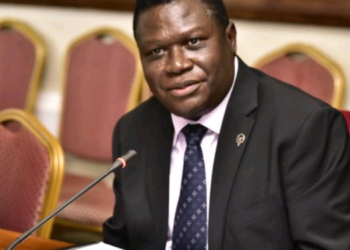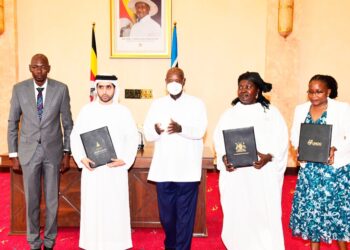On the night of 19th May this very year, Uganda Bureau of Statistics (UBOS) commenced the 2024 census exercise (NPHC) which lasted for 10 days. The idea was establish the number of people living and working in Uganda and quality of life they live. The census also sought to establish the other welfare-related characteristics of the Ugandan population.
The last census, preceding the one of 2024, had been conducted in the year 2014. The new census of 2024, whose final report is to be released and proclaimed by UBOS next month, equally shows the ways in which different things have changed in Museveni’s Uganda in the 10 year period counting from 2014 to 2024.
In the following story, we briefly summarise and reflect on ways in which Uganda has changed in the last 10 years (2014-2024). To begin with is the population itself which grew from 34.6m people in 2014 to 45.9m in 2024. Of these, 24.3m are females and 21.5m are males. Ten years earlier, men were 17m and women 17.5m.
When it comes to households, it stood at 7.3m in 2014 and today in 2024, it has grown to 10.6m. In 2014, 50% of the households in urban areas lived in rented premises and this today has reduced to 42%. In rural areas, those renting were 12% in 2014 and today the number has grown to 13%.
When it comes to citizenship, the 2014 census results indicated that 98.5% of the people living in Uganda at that time were citizens with foreigners or non-citizens living in Uganda accounting for 1.5%. That was 10 years ago. Today this has all changed with 99% of the people living in Uganda being citizens and another 1% being foreigners or non-citizens.
The 2024 census report establishes that 23% of the people in Uganda have and own a TV set compared to 2014 when it stood at 13.9%. Its also indicated or revealed that 3.8% of the households in Uganda own or have access to a computer of some sort. There is stagnation of some sort because even in 2014, the figure was 3.8%.
Largely because a lot of people these days depend on their phones to access news and other information, the 2024 census report shows that fewer Ugandans or households own or rely on conventional radio (41%) than in 2014 when 60% owned radio sets and exclusively relied on the same to access information and news.
When it comes to unemployment rate, the 2024 report shows that 10.5% of the working age Ugandans are jobless compared to 2014 when it stood at 9.4%. In 2014, the proportion of Ugandans with no education at all stood at 18.9% of the population compared to 2024 when it stands at 21.8%. One wonders why anyone would stay away from education even when universal education programmes like UPE and USE have been here for decades endeavouring to enable everyone to access formal education of some sort.
The 2024 report also shows that currently, 11.6% of Ugandans own or have access or can afford to use a motorcycle as a means of transport compared to 2014’s 8.6%. When it comes to bicycles, the 2024 census report puts ownership and access at 24% compared to 2014’s 31.5%. When it comes to motor vehicles, the 2024 census report puts the proportion of Ugandans who own them at 3.9%.
The 2024 report also credits improved immunisation coverage and enhanced access to high quality health services for the improvement in child and maternal health indicators. Under the 2024 report, Uganda’s maternal mortality rate stands at 207 in every 100,000 live births compared to 2014’s 438. It simply means the number of mothers who die in child birth-related circumstances in every 100,000.
There is also something about literacy rates and how the same has evolved in the last 10 years. In 2024, Uganda’s literacy rate stood at 74% compared to 2014’s 72.2%. When it comes to access to clean water, the 2024 report shows that 86.6% of urban dwellers in Uganda have access to clean safe water and 77.4% in rural areas. This refers to piped water in the case of urban areas and protected springs and boreholes for the case of rural areas. In 2014, 28.8% of urban dwellers accessed clean water and 71.2% did in rural areas.
A comparison of the two census reports (2014 & 2024) also shows that more Ugandans currently sleep or live under iron sheets-roofed houses than was the case 10 years ago (2014). Today 47% of households dwell in one-roomed houses compared to 2014’s 53%. More Ugandans live in brick houses than under mud ones.
In rural areas, 70% of the people live in their own houses (not rented) compared to 2014’s 83%.
Do you have a story in your community or an opinion to share with us: Email us at editorial@watchdoguganda.com













